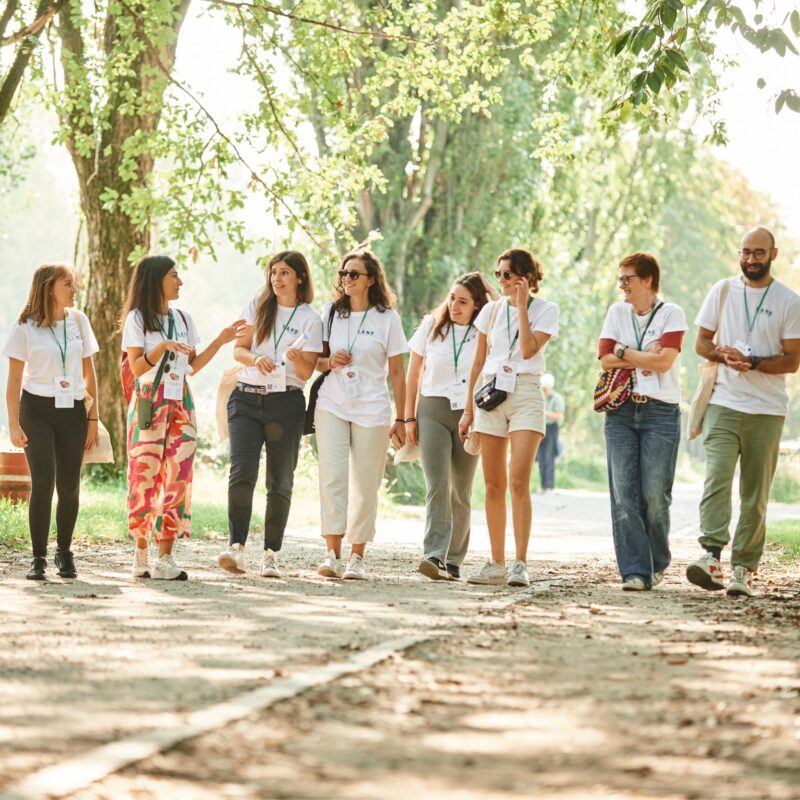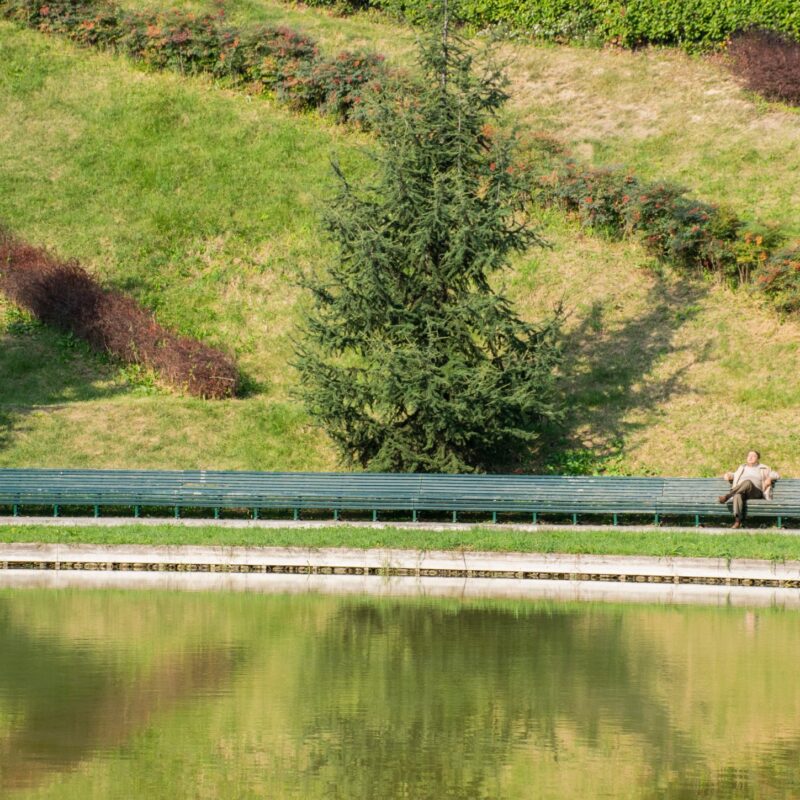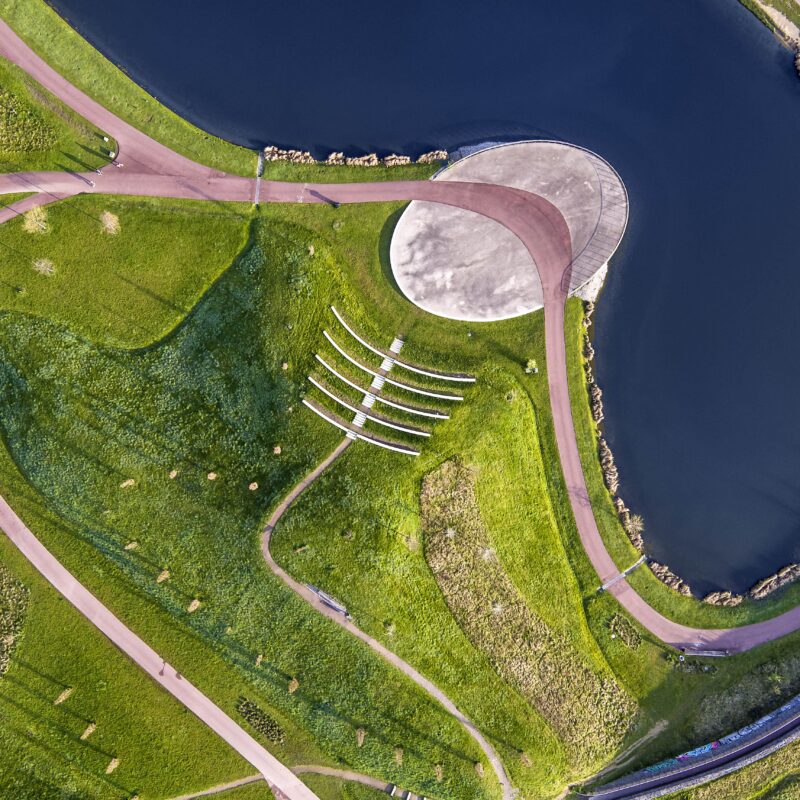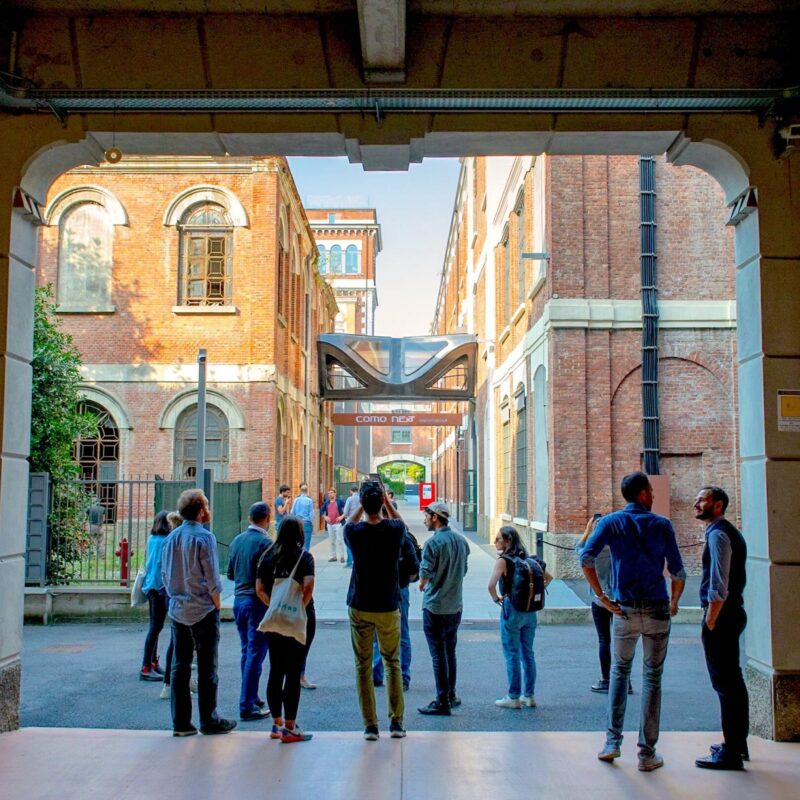
Newsletter #7: The Art of Cultivating - Cultivating Art
How can art help us to introduce and promote the paradigm change we urgently need in our world?
Our website states that our work always starts with a story. That’s how this new newsletter comes to life. We often host guests in the LAND Wunderkammer in Via Varese 12. You can find more than 70 projects on the wall that hold special significance in our work, including several collaborations with artists.
The question I received originated from Alik Cavaliere’s (1926-1998) drawing of the Landschaftspark Munich, a 1995 project. The framed drawing is prominent on the Wunderkammer wall. Given the project’s complexity, the guests wanted to know why I chose Cavaliere’s drawing. Cavaliere’s Art helped us visualize future ideas for the new urban district in an aesthetically pleasing yet precise manner, capturing the project’s spirit, characterized by the landscape as a superordinate entity.

Alik Cavaliere’s drawing in our Wunderkammer, next to Raymundo Sesma’s “Miglio Artistico”
Near Cavaliere’s drawing in our Wunderkammer, you’ll find our collaboration with Mexican artist Raymundo Sesma. His mural “Miglio Artistico” (The Artistic Mile) is the result of a joint workshop at the University of Basilicata in 2015, titled “La Bellezza Ritrovata: il nuovo paesaggio industriale tra arte e architettura” (The New Industrial Landscape Between Art and Architecture). The workshop underscored the importance of integrated efforts in landscape enhancement projects. A vital aspect of this project was transforming an industrial facility’s perimeter wall (approximately 1,800 meters) into an authentic work of Art. This project is rooted in the belief that an industrial facility can reshape the physical space and context in which it is situated, creating a new productive ecosystem that symbolizes the coexistence of industry and nature, past and present.
Such initiatives highlight the importance of interdisciplinary collaboration. Combining the visionary creativity of artists with the technical expertise of landscape architects revitalizes industrial areas, transforming them into spaces that inspire and connect communities with their environment, offering a glimpse into what the future may hold.
Artists help us understand and envision the future. As I mentioned in my interview with Editoriale Domus S.p.A in 2022, “Art gives us interweavings that we couldn’t live without. It’s a gentle and aesthetic form. Culture, nature, architecture, and Art.” This awareness has become increasingly important and essential to my practice. This is intrinsically related to the use of nature in cultivating productive landscapes, where new ethics lead to new aesthetic questions and solutions. Our collaboration with artists as LAND demonstrates how integration can occur while seeking answers to another question: How can Art create a new culture of perception regarding the relationship between nature and Art and anticipate the future?

Parco Borgoverde, Vimodrone, “Oltre la Soglia” by Agostino Ferrari, in a photo by Gabriele Basilico
When I had the chance to work with Agostino Ferrari in Vimodrone, where we completed the Borgoverde Park in 2009, his proposal of a three-dimensional version of his painting “Oltre la soglia” (Beyond the Threshold) as murals was thrilling. It added a new dimension to our landscape idea. The water system, land design, and green structure form a unicum. This urban project takes shape in an environmental scheme, completely reversing the usual approach of first the urban project, then the green. Ferrari’s artwork, the evocative dark gap in the middle of the wall, suggests what might lie beyond it when we dare to break it up and open toward the new.
Our collaboration with Thomas Schönauer began in 2013 at the IGS Hamburg with our installation “A Thousand and One Illusions” – a blue CT painting disc above a thousand seedlings, where he introduced the concept of osmosis and cross-contamination between disciplines. Even landscape architects are a kind of artist because landscapes are man-made and thus artificial. These landscapes often become Gesamtkunstwerke, as seen in Parco Portello in Milan or our Krupp-Park in Essen: canvases made by artificial nature.
In the Luthergarten in Wittenberg, a monument of 500 trees has been growing since 2016, radiating worldwide. Here, Schönauer’s floating sky cross made of stainless steel captures the lightness of tree growth, transforming it into the lightness of floating. The strong spiritual message is intertwined with the practical, creating a protective shadow space beneath the cross that osmotically connects with the landscape of the trees.

Cultivator, steel sculpture by Thomas Schönauer, in a photo by the artist
Schönauer’s “Cultivator” series, reminiscent of agricultural implements, is another example of tangible metaphors in public space. These pieces are highly aesthetic and admired for their material precision and harmonious design, symbolizing the constant pursuit of transformation, growth, and renewal.
Another significant project is the Ca- Corniani agricultural estate in the Venetian hinterland of Caorle, completed in 2018. The Italian financial group Generali Italia invested in reclaiming 1,700 hectares of land, creating a multifunctional centre (agriculture, tourism, social institutions, culture) that protects biodiversity while encouraging productivity. Italian artist Alberto Garutti, who sadly passed away last year, won an international competition with three site-specific works interpreting the ‘three thresholds of access to the estate.’ One beautiful neon installation lights up whenever lightning strikes in Italy, connecting people with nature’s power.
With the fast-paced technological progress, new questions arise. How has digital art revolutionized our perception and interaction with nature while offering a new lens through which we can appreciate the natural world? Advanced technology and creative ingenuity enable artists to blend nature’s organic beauty with the limitless possibilities of digital media. This is why we invited Italian digital artist Paola Pinna during Milano Design Week. She has been investigating what it means to be human today by focusing on life’s spiritual and magical aspects in our technologically advanced age. Our discussion highlighted how AI becomes a creative tool under careful artistic direction, previewing how technological-artistic innovation can redefine urban experiences.

Digital Artwork by Paola Pinna
It is about the contamination and osmosis between art and landscape architecture, a question of permeability and balance. This mutual exchange between nature and human creativity leads to richer emotions and creates new landscapes that are environmentally and culturally productive. If you visit us in our Italian office, you’ll be welcomed by a banner, created by Dieter Castenow, founder and owner of the communications agency Castenow: “Green is not a colour. It is an attitude!” This attitude underscores that Art should not simply act as a decorative accessory but take on an active, moderating aesthetic role that impacts society and can assist in the paradigm shift we are facing now: new ethics need new aesthetics!









